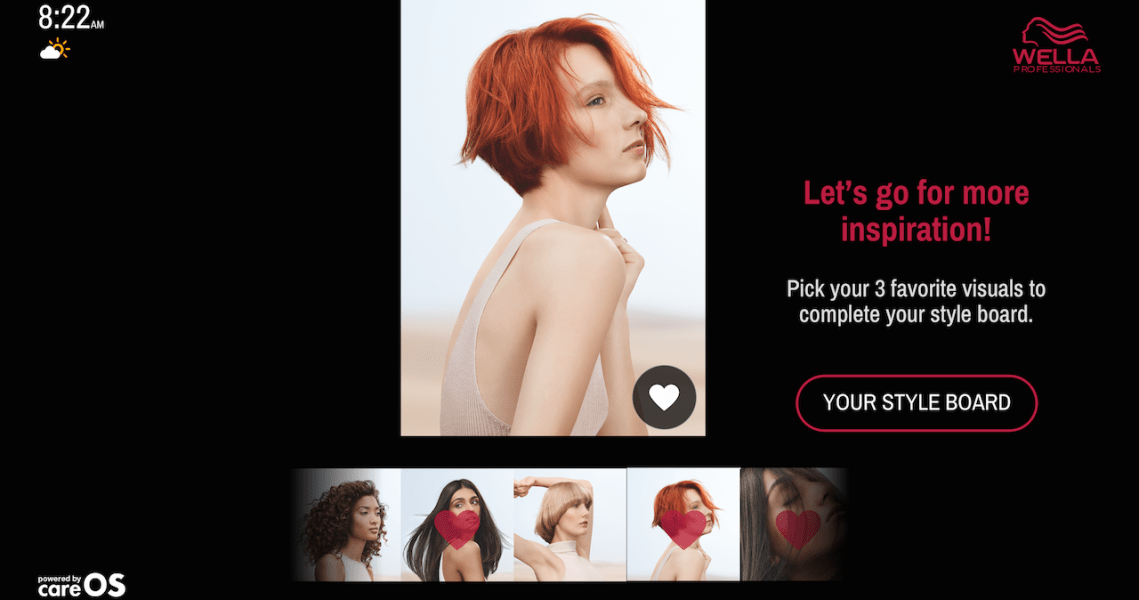Coty, Inc. announced on Monday that it has developed for its Wella Professionals salons an augmented reality mirror allowing customers to try on a range of hair colors. It’s one of many technology-backed consumer experiences Coty, the third-largest beauty conglomerate, has recently rolled out.
The mirror allows salon clients to virtually test hair shades and view trending and classic hair colors for inspiration. It also features facial recognition technology enabling the retrieval of clients’ past looks and services. This shortly follows Coty’s recent debut if its virtual reality experience for its perfume division, its AR tech partnership between Clairol and Snapchat, its virtual reality applications for CoverGirl, and its blended reality makeup mirror for the Bourjois boutique in Paris, among other tech-fueled launches. The rollout of these AR-, VR- and AI-backed technologies is part of Coty’s ongoing goal of developing a wide variety of services and use-cases for its brands and divisions that address consumer pain points.
Over the past few years, augmented reality has been widely adopted in the consumer space. While earlier iterations of the technology, as demonstrated through products like Google Glass in 2013, struggled to find an audience (Google Glass discontinued its prototype in 2015), the technology has since found a home. In July 2016, Pokémon Go helped usher in mass familiarity, and companies have used augmented reality for a variety of purposes, mostly entertainment. But Coty seeks to use augmented reality through its new mirror to solve consumer problems in the professional space.
“We want to make sure the technology we bring to the market has a purpose and relevance,” said Elodie Levy, senior director of digital innovation at Coty.
The new mirror, created in partnership with health and beauty tech company CareOS, is particularly designed to help clients and stylists navigate some of the pitfalls of receiving color services, mainly that the chosen color is not reflective of the client’s expectation or desire. The idea is that the mirror will be an “amplification” of a stylist’s expertise, but not a replacement, said Levy.
“The idea is to go beyond the product and offer a new generation of services that is, overall, a part of [today’s] beauty consumption,” she said. “Services and experiences are getting more vital as people are exposed to more touchpoints [from brands]. There is also some expectation from clients to be served this [type of] enriched content, because they are used to high levels of services from so many channels.”
Following the appointment, the mirror offers a 360-degree video capture feature, where customers can see every angle of their hair, which can additionally be shared on social media. In addition, clients can anonymously answer a survey about their level of satisfaction and enter their email address through the mirror, allowing the stylist to stay in touch with them between visits. Clients can also access the platform to connect with their stylist, get product recommendations, personalized tips and trends, and schedule their next appointment.
Ad position: web_incontent_pos1
As the public continues to become familiar with augmented reality, more use-cases are opening up in the beauty space. Users can virtually try on makeup, hair styles and nail colors, and the technology has also been used to train employees. It has also proven useful for brands when it comes to increasing basket size and the likelihood that someone will make a purchase.
Although the partnership with CareOS is first being expressed through a mirror, the idea is that the same experience will eventually be used on mobile phones or tablets. That way, salons that can not afford to purchase the mirror or do not have space for it can still have access. Currently, Coty is assessing deployment of the mirror within salons, and Levy said there is a “high likelihood” the product will be largely adopted by salons because of the flexibility of the technology to work with or without the physical mirror.
“The tech will be showcased first through the mirror, but the ambition is to create a series of functionalities, like a palette of services that can live everywhere,” she said.




